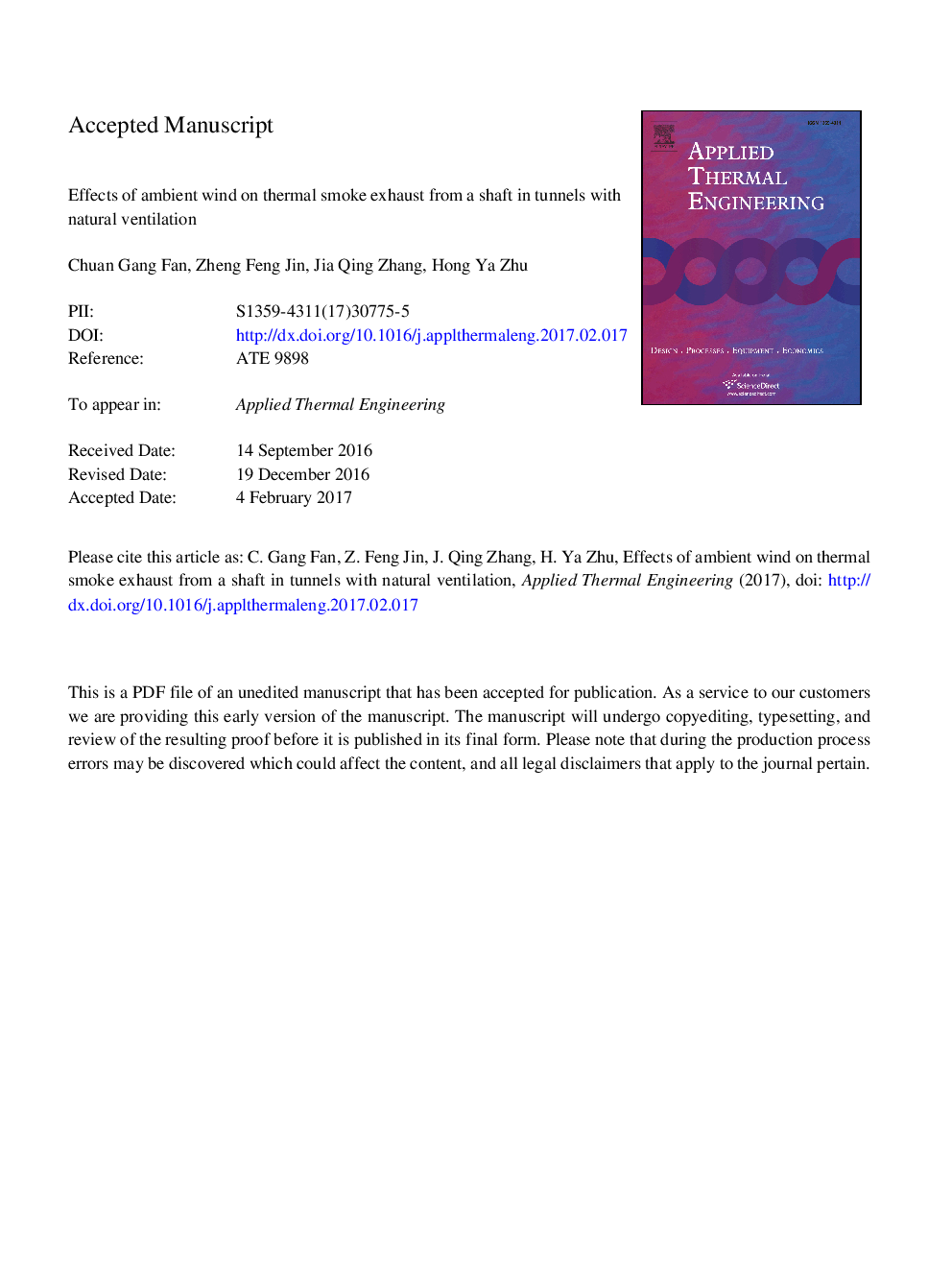| Article ID | Journal | Published Year | Pages | File Type |
|---|---|---|---|---|
| 4991517 | Applied Thermal Engineering | 2017 | 26 Pages |
Abstract
This study investigated the influence of ambient wind above the shaft opening on natural ventilation effectiveness in a tunnel by Large Eddy Simulation (LES), which is now widely applied to study the turbulent flow. The smoke movement characteristics were studied in detail, with systematically varying the ambient wind speed above the shaft opening and the longitudinal wind speed in the tunnel. The key heat and flow parameters inside and outside the tunnel and shaft, such as dispersion of smoke, temperature distribution, velocity vector field and mass flow rate of smoke exhausted by the shaft were investigated accordingly. The Reynolds number of the wind is in the range of 0.3-1Â ÃÂ 106 with velocity of 1-3Â m/s and the Reynolds number of the smoke flowing in the tunnel and shaft is in the range of 0.1-1.7Â ÃÂ 106 with velocity of 1-5Â m/s. The ambient wind above the shaft was found to have two opposite effects on the smoke exhaust from the shaft, namely a negative effect which restricts the smoke exhaust due to the perpendicular direction between the ambient wind and the originally vertical flowing smoke, and a positive effect which induces a negative pressure, in favour of accelerating the smoke exhaust. Moreover, both of these two effects will increase with increasing ambient wind speed above the shaft and they will compete each other simultaneously. The results will provide a theory support to guide the safe evacuation and smoke control in tunnels.
Related Topics
Physical Sciences and Engineering
Chemical Engineering
Fluid Flow and Transfer Processes
Authors
Chuan Gang Fan, Zheng Feng Jin, Jia Qing Zhang, Hong Ya Zhu,
